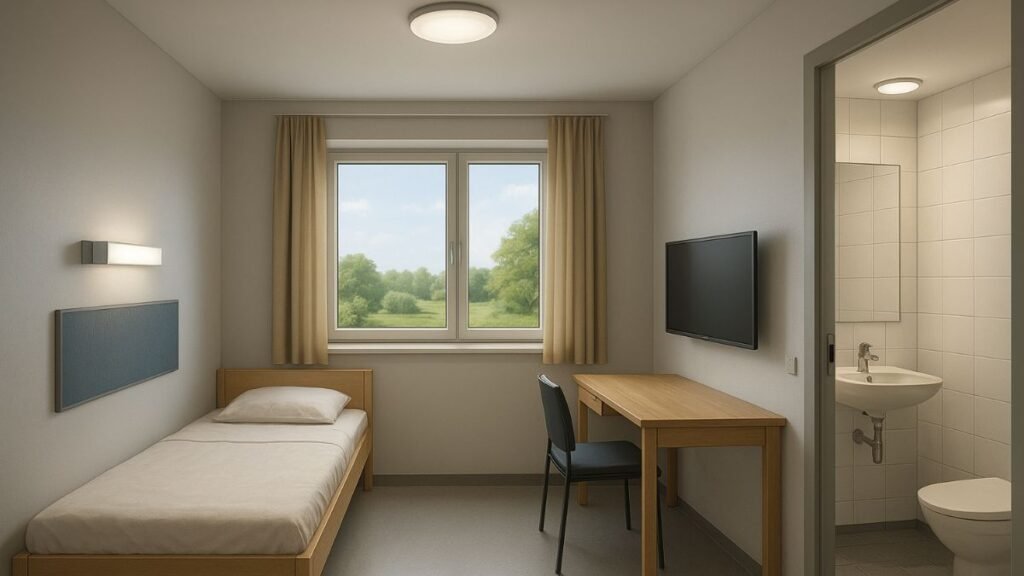India’s prison system struggles with overcrowding, poor facilities, and a lack of focus on rehabilitation. Compare this with some of the world’s most progressive prisons, where the goal is not just to punish but to prepare inmates for a return to society. The contrast is striking.
Norway Leads the Way in Human-Centered Prisons
Norway is often held up as the gold standard when it comes to prison reform. Instead of focusing on retribution, its model emphasizes dignity, rehabilitation, and reintegration.
Bastøy Prison

Located on an island, Bastøy is more like a small community than a jail. Over a hundred inmates live in cottages, work in farming and fishing, and spend time playing tennis or even riding horses. The philosophy is simple: treat inmates as people capable of change, and they’re less likely to re-offend.
Halden Prison

Halden is frequently called the most humane prison in the world. Inmates live in rooms that look like hostel dorms, with flat-screen TVs, large windows, and private bathrooms. Facilities include a music studio, library, and gym. Staff are trained to interact respectfully with inmates, building a culture of trust.
New Zealand’s Focus on Skills and Growth

The Otago Corrections Facility treats its inmates like students preparing for their future. Living spaces resemble hotel rooms, and inmates are encouraged to read, study, and develop skills. The idea is that once they leave, they have the tools to build a stable life.
Austria’s Justice Center Leoben

This Austrian prison is designed for non-violent offenders and looks more like a modern apartment block than a jail. Each prisoner gets a private cell with a bathroom, small kitchen, and TV. The architecture is open and welcoming, aiming to make inmates feel safe and respected.
Scotland’s Learning Prison Model

HMP Addiewell is nicknamed the “learning prison.” Inmates spend up to 40 hours a week in skill-based training. The focus is on employability, ensuring that when they leave, they can step into jobs and avoid falling back into crime.
Spain’s Family-Centered Prison

Aranjuez Prison in Spain has a unique approach: inmates can live with their families, including children. The aim is to keep family ties strong, so inmates don’t feel isolated from the very people who can support their rehabilitation.
Germany’s Castle-Like Yet Comfortable JVA Fuhlsbüttel

From the outside, Hamburg’s JVA Fuhlsbüttel looks like a fortress. Inside, however, inmates have large rooms with private showers and toilets. The atmosphere is designed to be dignified, not degrading.
The Philippines’ Dancing Prison

The Cebu Provincial Detention and Rehabilitation Center became famous for its inmates performing Michael Jackson’s “Thriller.” But beyond the viral videos, these group performances are part of a rehabilitation program that improves mental health, teamwork, and creativity.
Read More: Donald Trump Tariffs: The World’s Nuclear Domino Effect and the Risk Ahead




